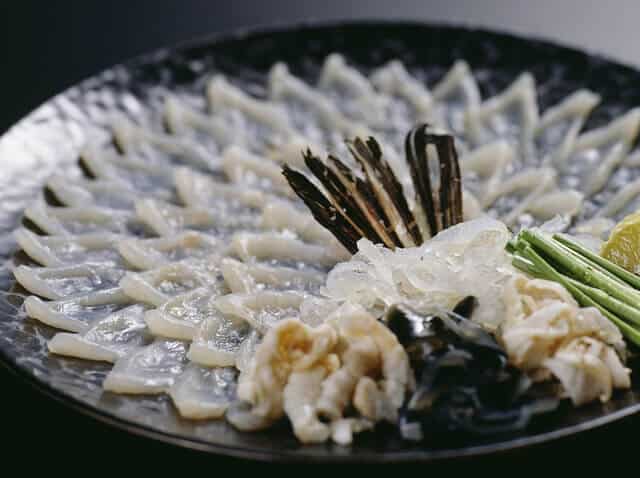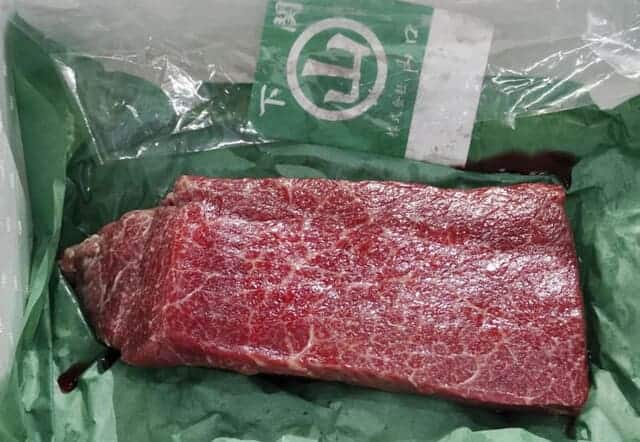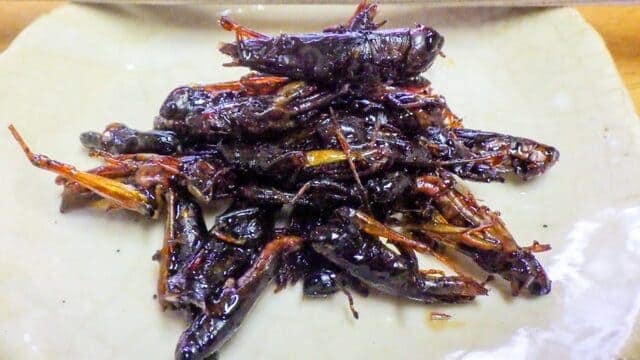Have you ever found yourself staring down a plate of something unfamiliar, a dish that both excites and terrifies your taste buds? Perhaps it was a plate of sea urchin roe, or maybe a bowl of sticky fermented soybeans. This is the beauty and intrigue of Japanese cuisine – a world where culinary boundaries are pushed, and unexpected ingredients become delectable treats. Japan is famous for its exquisite sushi and flavorful ramen, but its culinary landscape extends far beyond these popular dishes. This article is your passport to an exploration of Japanese “uncommon food,” those intriguing appetizers that will tantalize your taste buds and challenge your perceptions of food.
Beyond the Usual: Popular Yet Unfamiliar Japanese Food
Fugu (Blowfish)
This is the most famous of the uncommon Japanese foods. Fugu contains a deadly toxin, so only specially trained chefs can prepare it. Fugu is served in sashimi or hot pot dishes. To learn more about this food, you can look it up on our article about it here.
Basashi (Horse Sashimi)
Thinly sliced raw horse meat is a delicacy in Japan. Often served at izakayas and yakiniku restaurants, locals eat basashi similarly to fish sashimi, dipped in soy sauce and sometimes grilled over a flame-like beef.
Natto (Fermented Soybeans)
I think you all know now Natto, as it became a trend in Tiktok. It is a breakfast staple in Japan, natto is fermented soybeans with a strong smell and sticky texture. It is an acquired taste. Locals often served this with karashi mustard, soy or tare sauce, and sometimes Japanese bunching onion.
Shirako (Fish Sperm)
I know this sounds scary and a little disgusting in English, but Shirako is the sperm sac of sea creatures and a prized and expensive delicacy in Japan. Loved for its buttery, creamy texture and slight sea-like aftertaste. Locals serve this in various forms, including raw on sushi, with rice, as tempura, and in hot pot dishes.
Venturing Further: Uncommon Japanese Appetizers
Horumon (intestines)
Horumon, derived from the Kansai dialect term “horu-mono” meaning “things that are thrown away,”. It refers to cow and pig guts, which are typically discarded but are quite popular in Japan. Primarily enjoyed grilled at yakiniku restaurants, especially in Osaka, where its chewy, tubular texture and slightly sweet flavor set it apart from other meats.
Kujira (Whale meat)
Whale meat, once a staple in Japan’s post-war diet due to its affordability and high protein content. Hence, it is now less commonly consumed and found primarily in specialty shops. Today, it is typically available in traditional areas of Japan and certain parts of Tokyo, such as Ueno and Asakusa.
Inago (Grasshoppers)
Insects are commonly eaten in many parts of Asia, but in Japan, locusts were traditionally consumed in regions like Nagano and Fukushima during plagues when crops were destroyed. Known as inago, these high-protein insects are not widely eaten today but can still be found in some countryside izakayas and small restaurants. They are typically candied or flavored with soy sauce and are said to have a nutty taste.
Bachiko (Dried sea cucumber ovaries)
Bachiko, also known as Kotoko, kuchiko, or hoshiko, is a Japanese delicacy of dried sea cucumber ovaries. The ovaries are extracted from the sea cucumber without killing it, salted, and dried in the sun in a triangular shape. The name bachiko comes from the resemblance of the triangle to a shamisen pick, or bachi.
Shiokara (Fermented Squid Guts)
Shiokara is a Japanese delicacy made from fermented squid guts mixed with raw squid meat, translating to “salty-spicy.” Fermented in its viscera and salt for up to a month. It becomes a thick, brown paste often enjoyed with rice and alcohol. It is a cherished snack in izakayas, commonly paired with beer or whiskey.
Ankimo (Monkfish Liver)
Ankimo, or monkfish liver, is a prized Japanese delicacy often served as an appetizer in sushi restaurants and kaiseki cuisine. Dubbed the “foie gras of the sea” for its rich taste and smooth texture. Locals prepared it by salting, rinsing with sake, removing veins, rolling into a cylinder, and steaming. Then, they will serve it chilled and thinly sliced to enhance its delicate flavor.
Suppon (Turtle meat)
Suppon, a soft-shelled turtle, is a revered delicacy and health food in Japan. Consumed since at least the 1st century and for about 5,000 years in China. Believed to be a high-quality source of energy, it is sometimes recommended by doctors for cancer patients. Typically enjoyed at Washoku restaurants, where it is considered an expensive dish.
Why do the Japanese eat uncommon food?

Japan’s reputation for enjoying Japanese uncommon food is rooted in its history and resourcefulness as an island nation with limited landmass. Historically, the Japanese had to utilize all available ingredients from the sea and land, leading to the consumption of various seafood and unconventional cuts of meat. The development of preservation techniques like fermentation and drying allowed for longer storage during harsh winters and introduced unique flavors and textures to their cuisine.
Culturally, Japanese cuisine emphasizes seasonality and a balance of flavors and textures, where unusual ingredients can enhance the culinary experience with unique textures and umami depth. Additionally, a deep respect for nature in Japanese culture fosters a willingness to try diverse foods, appreciating the subtle flavors and textures each ingredient offers.
It’s important to note that not all Japanese people enjoy these uncommon foods. Tastes and preferences vary greatly, and some may find these dishes unappealing.
Summary

Our exploration of Japanese uncommon food has introduced us to a whirlwind of unique flavors and textures, from the thrill of fugu and the creamy indulgence of uni to the unconventional inago (grasshoppers) and zabuton (boiled pig skin). We’ve also delved into the ocean’s depths with bachiko (dried sea cucumber ovaries) and ventured into the fermented world of shiokara (squid guts). This journey highlights the remarkable diversity of Japanese cuisine. So, the next time you find yourself staring down a plate of unfamiliar Japanese fare, take a deep breath and embrace the adventure!
Remember, the seemingly strange can become surprisingly delightful. Japanese cuisine offers a world of flavors waiting to be discovered. Step outside your comfort zone and embark on your delicious adventure through the wonders of Japanese uncommon food.





































Comments